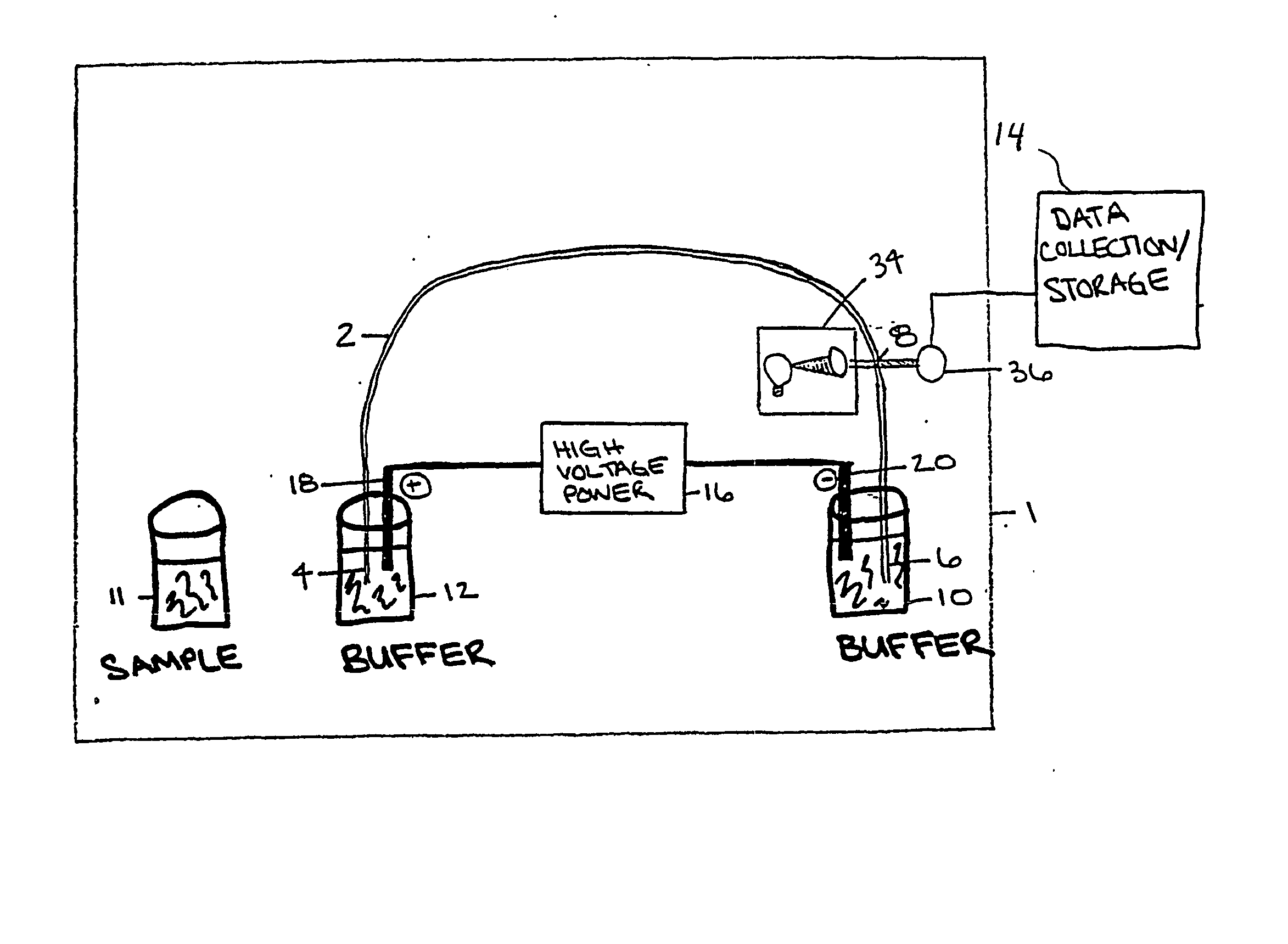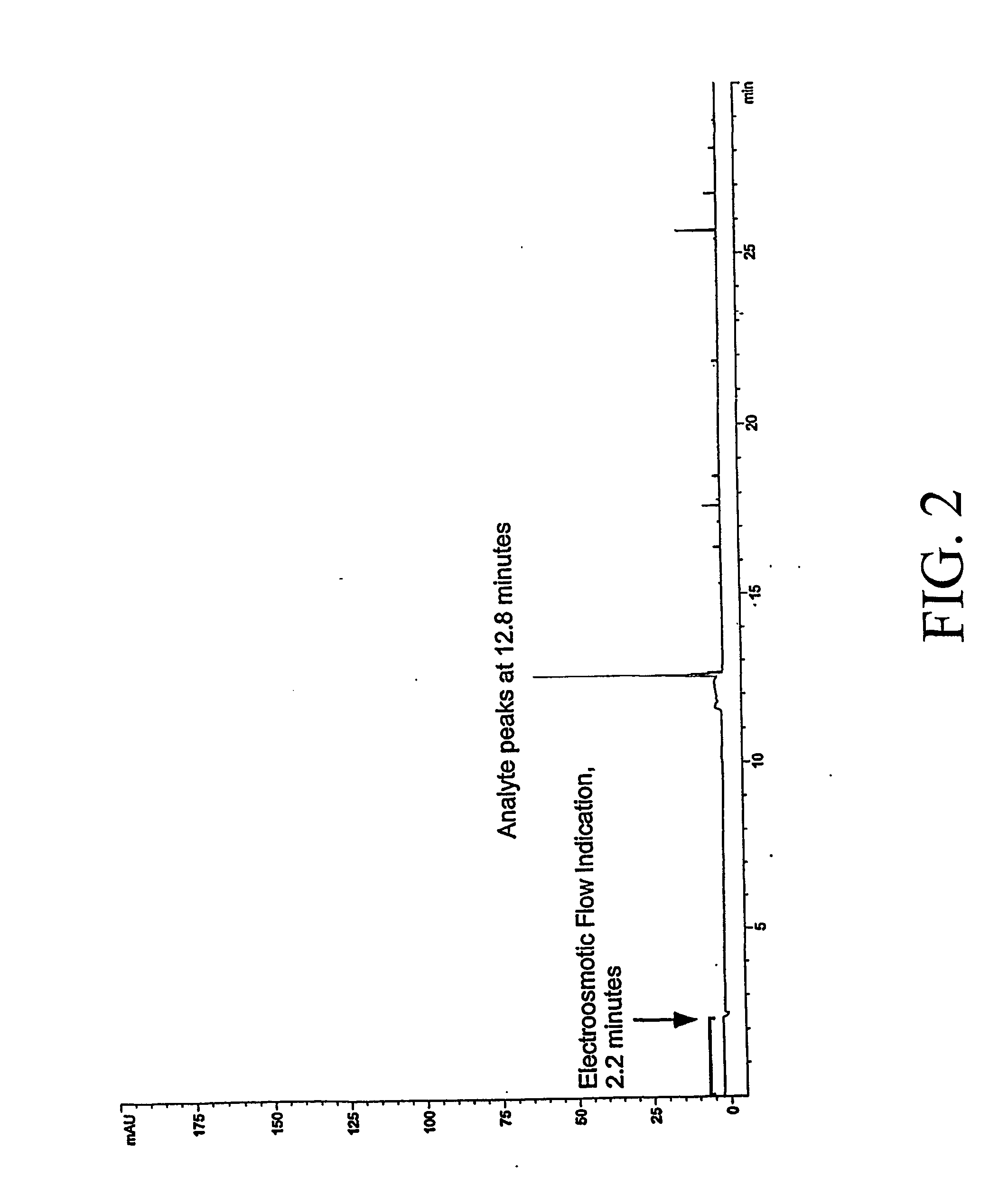Method for orthogonal analyte stacking/injection systems in electrophoresis
an electrophoresis and orthogonal analyte technology, applied in the direction of liquid/fluent solid measurement, fluid pressure measurement, peptide, etc., can solve the problem of inability to preserve the high-resolution capabilities of capillary electrophoresis, many analytical detection systems are inadequate to detect analyte, and it is difficult to detect short injection plug lengths of low-concentration analytes using standard optical detection set-ups
- Summary
- Abstract
- Description
- Claims
- Application Information
AI Technical Summary
Problems solved by technology
Method used
Image
Examples
example no.1
Conclusion--Example No. 1
[0120] The electrokinetic stacking of neutral analytes driven by electroosmotic flow for subsequent EKC separation has been demonstrated. With discontinuous sample matrix / separation buffer co-ions, (high-salt sample matrix mode), or continuous sample matrix / separation buffer co-ions (sweeping), neutral analytes can be injected at the velocity of the electroosmotic flow. The stacking boundary in each mode allows electrokinetic sample plug injections greater than the actual capillary length. Not only was a marked increase in the subsequent resolution of analytes at injection lengths required for low detection limits of neutral analytes possible, injection times were reduced by 4- to 50-fold versus pressure injections. Injection of neutral analytes by electroosmotic flow is a logical, broadly applicable, and expedient stacking method for EKC. Electrokinetic injection has the potential to provide a convenient mode for stacking injections with capillary arrays, a...
example no.2
EXAMPLE NO. 2
Conclusions
[0145] Extreme attenuation of analyte zones is obtained by extended electrokinetic stacking injection in EKC. Separation buffer parameters were investigated to allow extended injection plug lengths with continuous conductivity sample matrixes. As analytes are injected by electroosmotic flow into the separation buffer, each analyte exhibits a decrease in velocity due to the interaction with the micelles in the separation buffer. To determine maximum-length injections, the velocity of each analyte / electrokinetic vector complex must be considered. Equations have been introduced to determine the maximum injection length per individual analyte / micelle complexes.
[0146] A simple relationship exists between the velocity of the electrokinetic injection vector and the resultant velocity of analytes that encounter an electrokinetic vector that imparts a mobility that is opposite that of the injection vector. This relationship determines the maximum injectable plug lengt...
PUM
| Property | Measurement | Unit |
|---|---|---|
| length | aaaaa | aaaaa |
| length | aaaaa | aaaaa |
| length | aaaaa | aaaaa |
Abstract
Description
Claims
Application Information
 Login to View More
Login to View More - R&D
- Intellectual Property
- Life Sciences
- Materials
- Tech Scout
- Unparalleled Data Quality
- Higher Quality Content
- 60% Fewer Hallucinations
Browse by: Latest US Patents, China's latest patents, Technical Efficacy Thesaurus, Application Domain, Technology Topic, Popular Technical Reports.
© 2025 PatSnap. All rights reserved.Legal|Privacy policy|Modern Slavery Act Transparency Statement|Sitemap|About US| Contact US: help@patsnap.com



